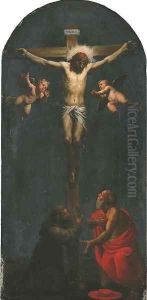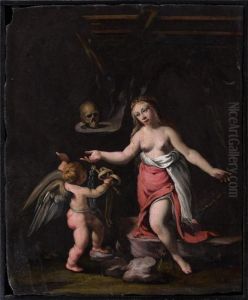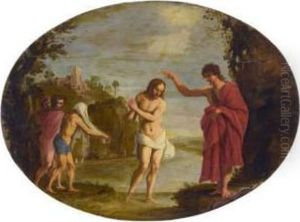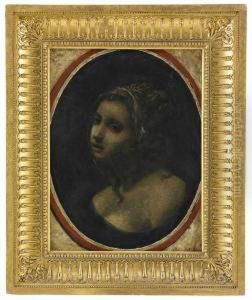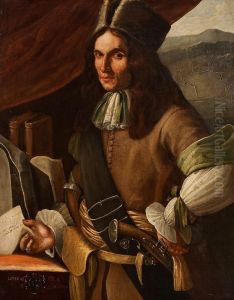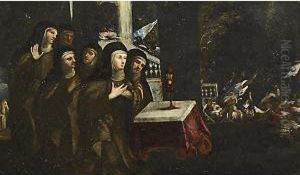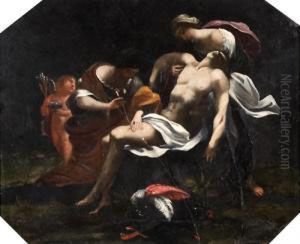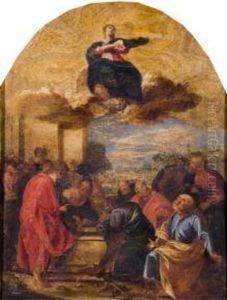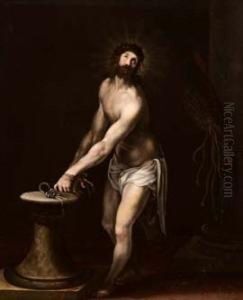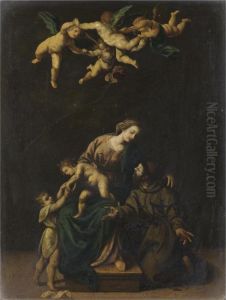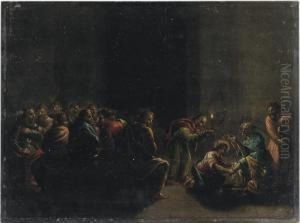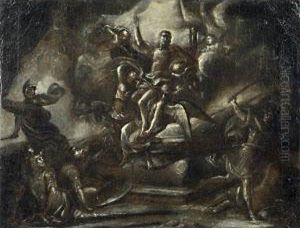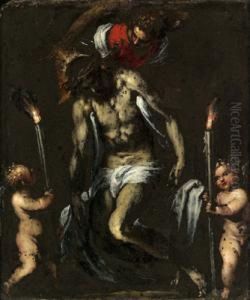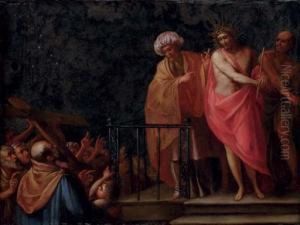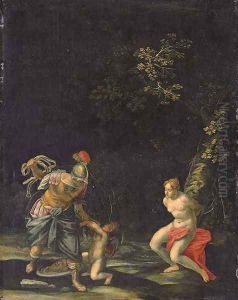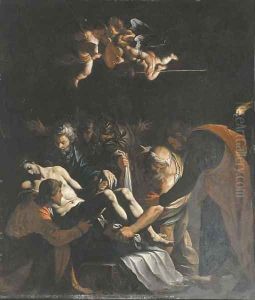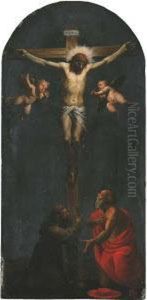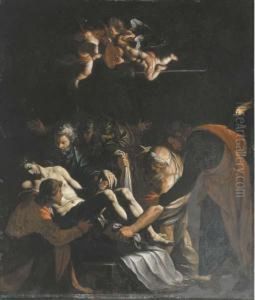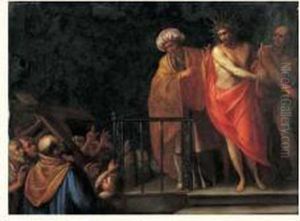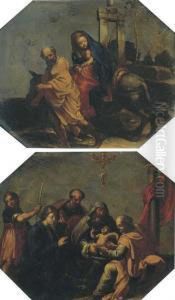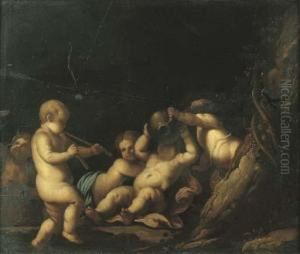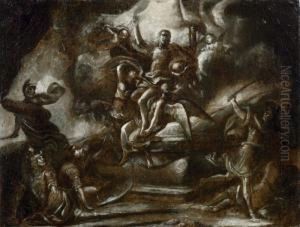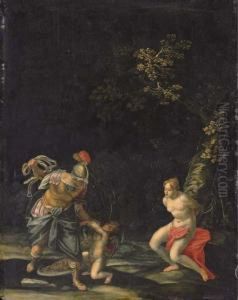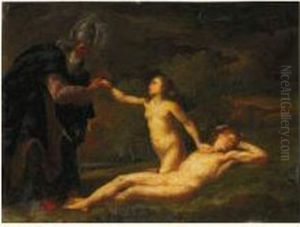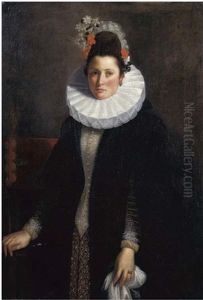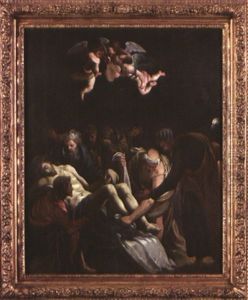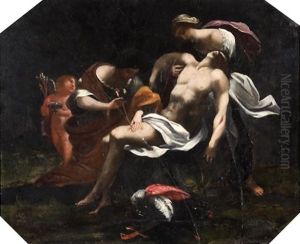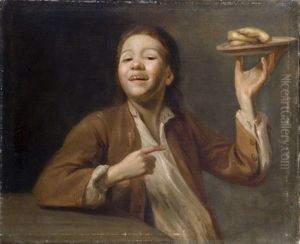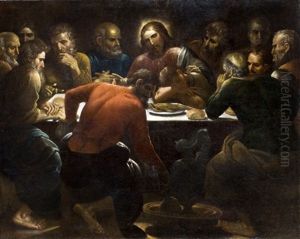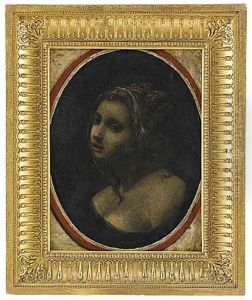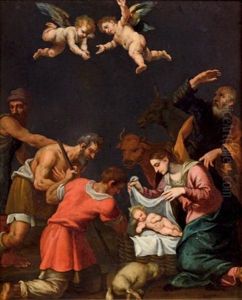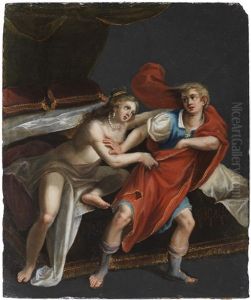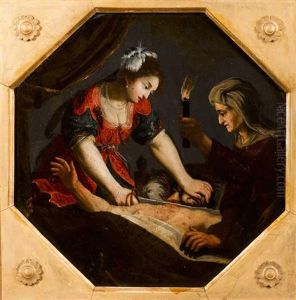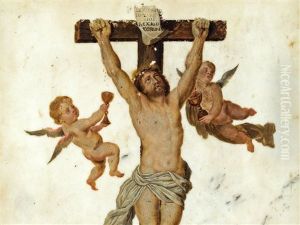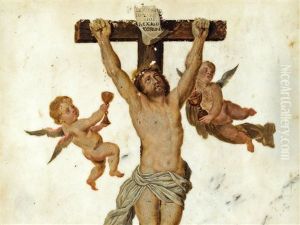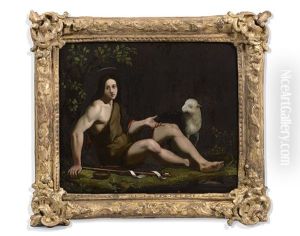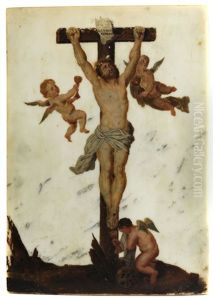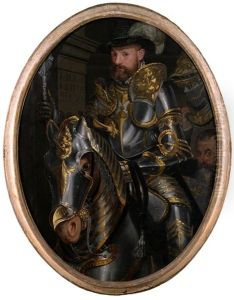Pasquale Ottino Paintings
Pasquale Ottino, also known as Pasquale Ottini or Pasqualotto, was a Baroque painter born in Verona, Italy in 1578. He was a prominent artist of the early 17th century, known for his dynamic compositions and dramatic use of light and shadow, which reflected the influence of the Venetian School and Caravaggio's tenebrism.
Ottino's early life is not well documented, but it is known that he was active in his hometown of Verona. He was likely trained by local Veronese artists and was influenced by the works of contemporaries such as Jacopo Bassano and Paolo Veronese. His style also shows the impact of Caravaggio's naturalism and chiaroscuro, which was spreading throughout Italy due to the travels and works of Caravaggio's followers.
Throughout his career, Ottino produced religious works for churches and convents, as well as mythological and historical paintings. He was particularly adept at creating large altarpieces, which required a mastery of scale and the ability to convey drama and emotion to viewers standing at a distance. Some of his notable works include 'The Martyrdom of St. George' and 'The Adoration of the Shepherds'.
Ottino's work was characterized by his strong use of color and the contrast between light and dark. His compositions often featured intense expressions and gestures, which helped to convey the emotional intensity of the scenes he depicted. Despite his talent, Ottino did not achieve the same level of fame as some of his contemporaries, and his works were sometimes overshadowed by those of more prominent artists of the time.
Pasquale Ottino died in 1630 in Verona. His contributions to the Baroque period, while not as widely recognized as those of some of his peers, were significant in the development of 17th-century Italian painting. His works are housed in various collections and churches in Italy, serving as a testament to his skill and artistic legacy.
